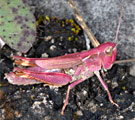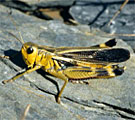Duroniella fracta (Krauss, 1890)
![Duroniella fracta: Male (Greece, Samos Island, Lake Alyki, May 2017) [N] Duroniella fracta: Male (Greece, Samos Island, Lake Alyki, May 2017) [N]](thumbs/acrididae/fracta_im2017.jpg)
![Duroniella fracta: Male (Greece, Samos Island, Lake Alyki, May 2017) [N] Duroniella fracta: Male (Greece, Samos Island, Lake Alyki, May 2017) [N]](thumbs/acrididae/fracta_2im2017.jpg)
![Duroniella fracta: Male (Greece, Samos Island, Lake Alyki, May 2017) [N] Duroniella fracta: Male (Greece, Samos Island, Lake Alyki, May 2017) [N]](thumbs/acrididae/fracta_3im2017.jpg)
![Duroniella fracta: Male (Greece, Samos Island, Lake Alyki, May 2017) [N] Duroniella fracta: Male (Greece, Samos Island, Lake Alyki, May 2017) [N]](thumbs/acrididae/fracta_4im2017.jpg)
![Duroniella fracta: Male (Samos, May 2014) [N] Duroniella fracta: Male (Samos, May 2014) [N]](thumbs/acrididae/fracta_m2014.jpg)
![Duroniella fracta: Female (Greece, Samos Island, Lake Alyki, May 2017) [N] Duroniella fracta: Female (Greece, Samos Island, Lake Alyki, May 2017) [N]](thumbs/acrididae/fracta_5im2017.jpg)
![Duroniella fracta: Female (Greece, Samos Island, Lake Alyki, May 2017) [N] Duroniella fracta: Female (Greece, Samos Island, Lake Alyki, May 2017) [N]](thumbs/acrididae/fracta_6im2017.jpg)
![Duroniella fracta: Female (Greece, Samos Island, Lake Alyki, May 2017) [N] Duroniella fracta: Female (Greece, Samos Island, Lake Alyki, May 2017) [N]](thumbs/acrididae/fracta_7im2017.jpg)
![Duroniella fracta: Female (Greece, Samos Island, Lake Alyki, May 2017) [N] Duroniella fracta: Female (Greece, Samos Island, Lake Alyki, May 2017) [N]](thumbs/acrididae/fracta_8im2017.jpg)
![Duroniella fracta: Female (Samos, May 2014) [N] Duroniella fracta: Female (Samos, May 2014) [N]](thumbs/acrididae/fracta_w2014.jpg)

![Duroniella fracta: Female (Samos, May 2014) [N] Duroniella fracta: Female (Samos, May 2014) [N]](thumbs/acrididae/fracta_3w2014.jpg)
![Duroniella fracta: Habitat at a salty laguna near the southeast coast of Samos (May 2014) [N] Duroniella fracta: Habitat at a salty laguna near the southeast coast of Samos (May 2014) [N]](thumbs/acrididae/fracta_h2014.jpg)
![Duroniella fracta: Habitat in salty marshes (Greece, Samos Island, Lake Alyki, May 2017) [N] Duroniella fracta: Habitat in salty marshes (Greece, Samos Island, Lake Alyki, May 2017) [N]](thumbs/acrididae/fracta_h2017.jpg)
Habitat:
Duroniella fracta inhabits most often halophilous and humid sites near the coast. In Samos, I recorded it in a coastal swamp near the southeastern coast.
Life cycle:
I found adults in Samos in May 2014. They often rest on grass stalks and halophilous herbs.
Endangerment factors:
As coastal swamps belong to the most endangered habitats and Duroniella fracta occurs only very locally, this species may be strongly threatened.
Remarks:
In Europe, Duroniella fracta seems to be restricted to Greece. It is also found in adjacent parts of West Asia, including Asia Minor and the Near East.
Duroniella lucasii


